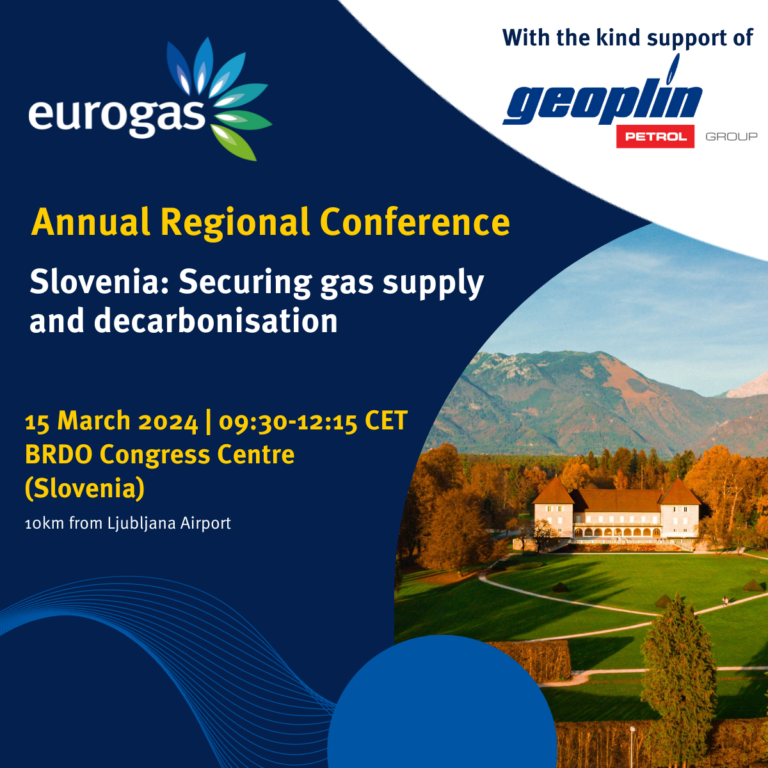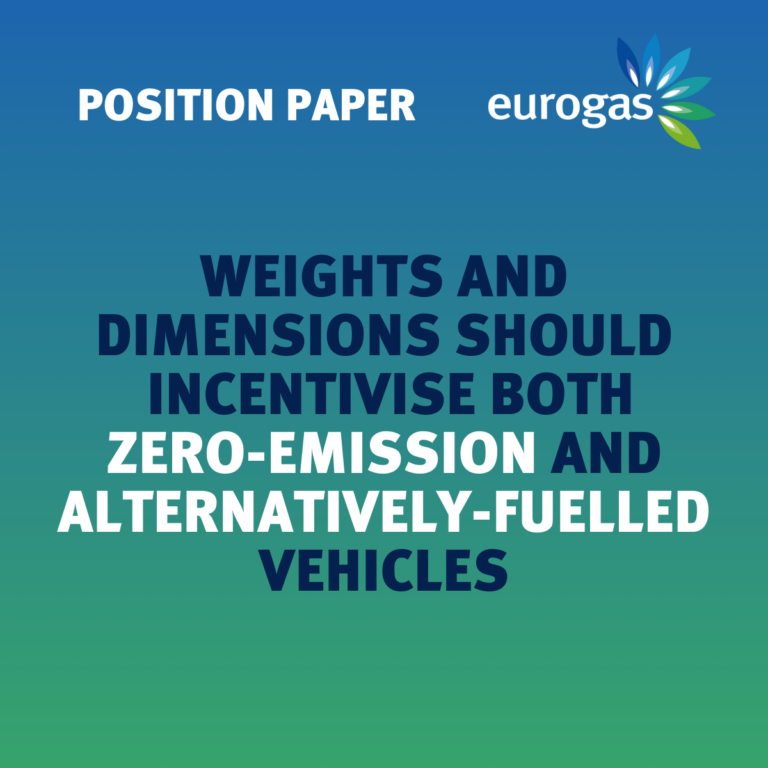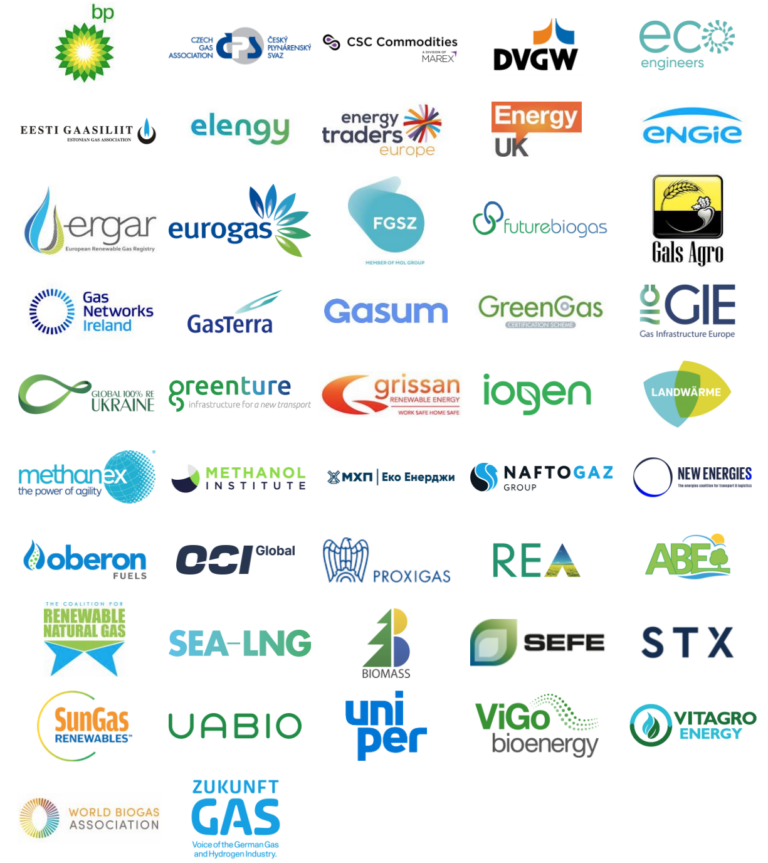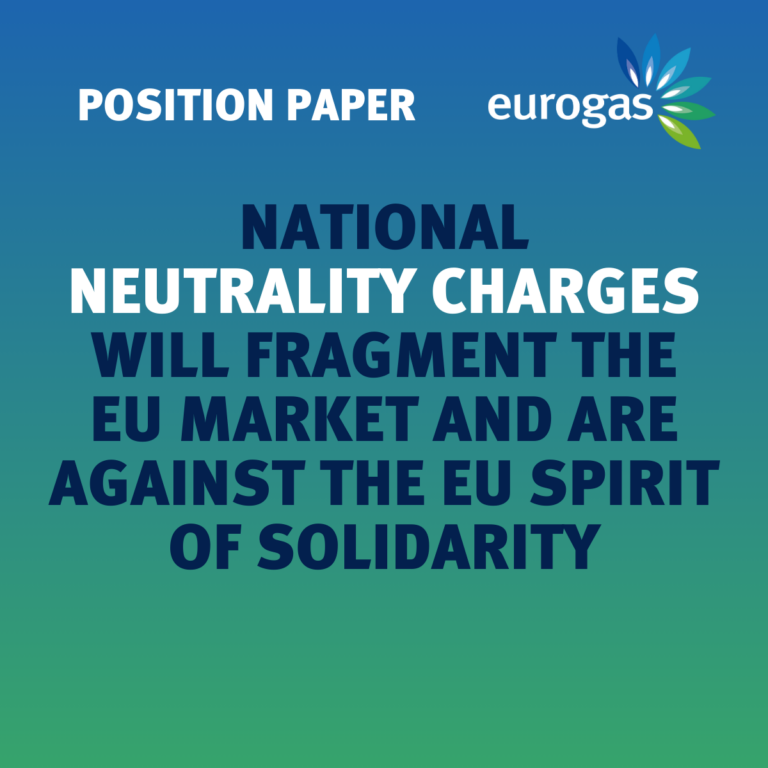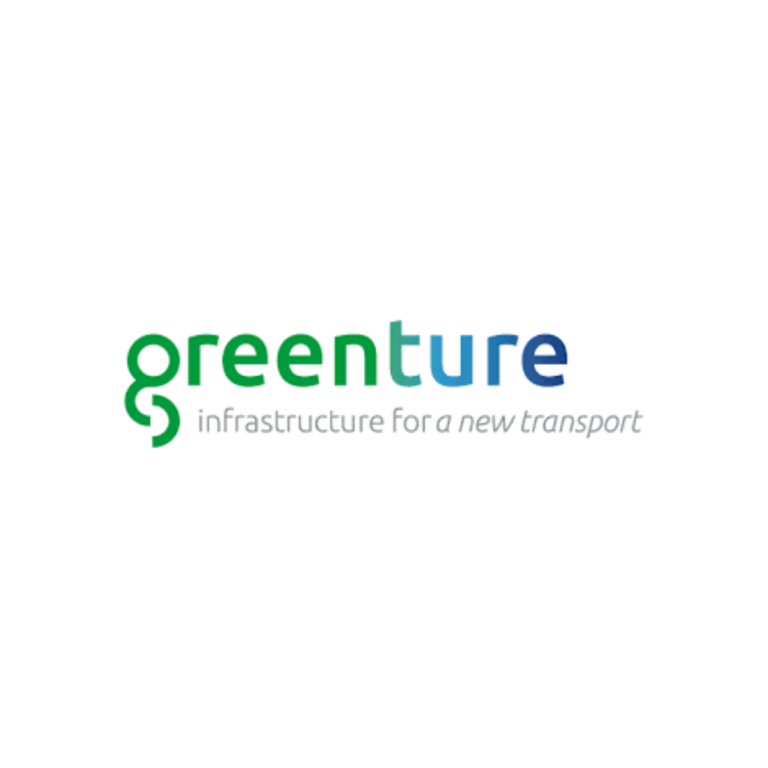
Editorial – Eurogas Policy Director Andreas Guth
Welcome to a special issue of Molecules – The Eurogas Newsletter. This issue is dedicated entirely to our extensive study ‘A Pathway to 2050: The Role of Gas’, which explores a scenario to reach climate neutrality and how gas could lower its elusive price tag.
Following publication, we invited three experts to comment on our findings and we are delighted to share their opinion editorials with you in this issue. We thank CEO of energy company Uniper, Andreas Schierenbeck; Senior Research Fellow at think tank Chatham House, Daniel Quiggin; and Director of Climate Change at European association CEFIC, Peter Botschek for their thoughtful insights. We are grateful for the compliments on the study’s approach and achievements, the constructive criticism of the study’s shortcomings, and most of all the collaboration shown by our peers as we work collectively towards policies that will push the energy transition forward.
It will surprise few readers that our study found gaseous energy to be a necessity in every sector if we are to make the energy transition a success. Natural, renewable and decarbonised gas will have to part of the overall solution across society – and not only in those sectors where electrification is technically challenging or impossible. The task of delivering a Paris-compatible energy transition requires us to take a holistic view of the energy system, the challenges ahead, regional specificities, and the associated costs at every step of the value chain. As such the concept of ‘hard-to-decarbonise’ sectors goes much further than the technical barriers to switching end-user appliances.
The decarbonisation of the building sector is an ideal example, because electrifying heating promises to be an easy, efficient, and clean solution – a ‘no brainer’. But electrifying heating is not just a matter of replacing an efficient gas condensing boiler with an even more efficient electric heat pump. For most homeowners it means deeply renovating their homes and to completely change their entire heating system. Achieving a critical mass of heat pumps also requires a complete overhaul of the electricity infrastructure, which must be massively expanded, to guarantee that everyone can keep warm in winter. And of course, the electricity used must also be carbon neutral. In many cases it will be more cost-effective and more realistically achievable to make sure that the existing gas system delivers climate neutral energy.
It seems that much of the public discourse is putting the cart before the horse. It is correct that electrification of end-uses can in many cases improve energy efficiency, but that does not mean that it is also the best way to decarbonise our economy. Energy efficiency, increased electrification and the greening of the electricity sector will undoubtedly have to play an important role in the energy transition. But energy efficiency is only one of many tools needed for creating a climate neutral economy. The overall choice and combination of available solutions depends on how cost-effective they are in achieving our decarbonisation objective.
We have all the technologies necessary to reach our goals. What remains now is for policy makers to focus on how to deploy these technologies – and the policies to support them – to deliver a climate neutral economy in the most cost-effective and socially acceptable way.
Introduction and Key Findings
“Eurogas commissioned this study to demonstrate there are many different pathways to 2050, but we wanted to establish which would be the most affordable way. Decarbonised and renewable molecules will help us reach the EU Commission’s 2050 Climate Neutrality Ambition in a more cost effective way than a pathway based on high levels of electrification. One thing is for sure, whichever pathway you want to take, you cannot get to climate neutrality without gaseous molecules.” – Eurogas Secretary General Dr James Watson
In November 2018, the European Commission proposed eight scenarios to achieving its vision of a carbon neutral 2050 energy system. Gas fuels are necessary in all the scenarios identified by the European Commission, but the need for gas is considerably higher in some.
To investigate these scenarios further and understand what would need to change in both our society and our energy mix, Eurogas commissioned a study with consultant DNV GL. This study demonstrates the savings associated with the scenarios that use more gas and finds that 4.1 trillion Euros could be saved by 2050 using gaseous energy and decarbonised gas technologies to achieve net zero emissions.
The study presents two competing scenarios Eurogas and 1.5TECH to achieve carbon neutrality by 2050 and compares those to a baseline (ETO2019). The baseline forecasts ‘a best estimate future’ reflecting current global decarbonisation policies. In this future, the Paris Agreement ambitions are not achieved. It forecasts that by 2050 only 76% of energy-related CO2 emissions are mitigated.The Eurogas scenario supports gaseous energy delivery through the existing gas infrastructure, which continues to be used. The gas system in this scenario is central to the transforming European economy. Gaseous energy is supplied to all sectors as a mix of natural gas, biomethane and hydrogen, complemented with carbon capture use and storage technology (pre-combustion and post-combustion).
Key Findings of the Eurogas Study are available here: Eurogas Slide Deck – Key Findings in a Pathway to European Carbon Neutrality – The Role of Gas
Opinion Editorial: CEO Uniper Andreas Schierenbeck
Allowing Competing Technologies Brings Low Cost Rewards
In 2018 the European Commission published the so called 1.5TECH scenario as part of the ‘long-term strategic vision for a prosperous, modern, competitive and climate neutral economy.’ This scenario strongly focused on electrification to reach this goal, without being a ‘full electrification’ scenario.
Natural gas played only a minor role; mainly for backing up the power sector with reliable generation. Thus, it was phased out over time.
On 30 June 2020, Eurogas presented its study “A Pathway to a Carbon Neutral 2050: The Role of Gas.” The study compares the EU 1.5TECH scenario with a competing, Eurogas scenario, which has a far more neutral approach to technology and takes advantage of existing gas infrastructure. Renewable and decarbonized gases play a much more prominent role. Indeed, a mix of natural gas, biomethane and hydrogen is complemented with CCS technology that even allows for net negative emissions.
While both scenarios are reaching carbon neutrality in 2050, the acceptance of different technologies in the Eurogas scenario is rewarded with significantly lower costs.
Without going into all details of the underlying assumptions, the clear advantage of the Eurogas pathway is its significantly lower cost, and therefore the lower financial burden for European industry and consumers.
Even though a climate neutral economy by 2050 appears to become a common target within Europe, acceptance will be challenged when the energy bill rises. So it is particularly important that the Eurogas scenario presents cost-efficient decarbonisation solutions for the building sector. Social acceptance and affordability are barriers that should not be underestimated. Electrification of heating can reduce energy demand compared to gaseous solutions and it should be applied where appropriate, e.g. for new homes. But for a large amount of existing buildings this is not an option, and instead gas offers clear solutions and advantages. Implementation is kept easy and affordability is maintained for households across Europe, when renewable and decarbonised gases are used. The study clearly shows that making use of gaseous solutions across all sectors saves €130 billion per year until 2050. As the main cost driver of the 1.5TECH scenario is the electrification of heating, the incredible amount of more than €10 trillion in subsidies has been identified as the cost of retrofitting existing buildings.
The real challenge will be setting the right political framework to reach the envisaged targets – and particularly doing this cost-effectively. Carbon neutrality is European Union’s (EU) stated target. Thus Uniper would argue that all options need to be kept on the table accordingly if they will support in reaching this target. The EU Emissions Trading Scheme (ETS) is an efficient, market-based instrument, that has been introduced to drive down CO2 emissions from the power and industrial sectors. As such an instrument is not in place for the building or mobility sectors. This means there is a risk of limiting the options according to political preferences. The Eurogas study clearly highlights the consequences for the building sector, the burden for which will largely fall on private households as they pay higher costs to reach carbon neutrality.
As well as what is demonstrated in the Eurogas study, Uniper believes there is greater opportunities for renewable and decarbonised hydrogen and synthetic gases to play a role in the mobility sector. Using synthetic, liquid and gaseous fuels in addition to Battery-Electric Vehicles (BEVs) and Fuel Cell Electric Vehicles (FCEVs) opens up significant potential, and also enables the use of existing infrastructure. With the European Commission’s Energy System Integration strategy, published 8 July 2020, the EU Commission is making it clear that hydrogen and synthetic fuels are needed as the third pillar of the energy system of the future, alongside energy efficiency and electrification.
***
Andreas Schierenbeck became the CEO of Uniper, the German energy supply company, in September 2019. He was appointed to the German National Hydrogen Council on 10 June 2020. Schierenbeck was previously Chairman of the Board for Thyssenkrupp Elevator AG and spent more than a decade in leadership roles at Siemens AG. Schierenbeck holds a Master’s degree in Electrical Engineering from the University of Dresden and an Advanced Management Program (AMP) Certificate from Harvard Business School.
Opinion Editorial: Senior Research Fellow Chatham House Daniel Quiggin
Beyond Natural Gas – But with Implicit Risks
The Eurogas scenario represents a progressive step forward in the European gas industry seriously seeking to decarbonise. However, its reliance on the role of carbon capture and storage (CCS) and bioenergy with CCS (BECCS) is highly risky. These technologies are central to the scenario – yet they simply may not deliver the carbon capture and sequestration rates currently claimed.
Under the global IEA and IRENA ReMap scenario, the energy sector carbon budget currently stands at roughly 630 GT CO2 until the end of the century. Based on current fossil fuel emissions, this will could be exhausted by 2040. This would leave the world reliant on unproven and risky negative emission technologies. Whilst in theory this approach makes sense, both CCS and BECCS are still very much in development.
Firstly, CCS has been under development for many years, but despite political support, the global roll-out of CCS has not yet occurred. A handful of CCS demonstration plants have been built, but third-party verification indicate the real-world capture of CO2 may not meet the theoretical potential.
Secondly, in theory BECCS removes CO2 from the atmosphere, creating negative emissions (as many assume the emissions associated with the growing of biomass to be carbon neutral.) However, there is growing evidence that biomass feedstock supply chain emissions are likely to be larger than first thought, and that the volume of biomass material required could place demands on agricultural land, potentially increasing food prices.
Thirdly, not only are CCS and BECCS technologically challenging, they are costly. The Eurogas scenario forecasts a low carbon price, which the industry will welcome. If CCS can be delivered at scale with minimal subsidies, then all well and good. However, the industry will no doubt look to other fossil fuel industries with an increasing proportion of assets at risk of becoming stranded and consider if these long lifetime CCS assets will remain cost competitive with electrolysis, and renewables, both of which continue to rapidly decline in costs.
Under the Eurogas scenario, a major source of carbon emissions remains into 2050 and beyond, due to the non-marginal role for unabated natural gas in the heating and electricity sectors. The scenario is dependent on negative emission technologies, principally BECCS, to balance these emissions. The capture rates of CCS are a risk that only time, and evidence will resolve.
The most progressive forecast the Eurogas scenario makes is the significant and growing role it attributes to green hydrogen. Green hydrogen is produced from water and renewable electricity via electrolysis. There are no associated carbon emissions, except those embodied in the manufacturing of the electrolysis infrastructure, which are marginal.
This is prudent economic forecasting. The costs of electrolysis are rapidly declining. In addition, this seemingly points towards a significant transformation of the gas industry itself.
The scenario also comprehensively addresses two fundamental problems that all decarbonisation scenarios struggle with. Firstly, that demand reduction is challenging, without which it’s difficult to see renewables and electrification as viable, and secondly the balancing of variable renewables on the electricity system. The Eurogas applies the CCS and negative emission argument to allow demand to remain closer to today’s levels than other scenarios. It then utilises gas-fired power stations to balance renewables on the grid. But as discussed, this approach embodies risks.
Alternative approaches do already exist. Regarding the integration of variable renewables and the flexibility of the electricity network, there are new technologies which could achieve the sort of flexibility gas power stations provide. These include batteries, bi-directional EV charging, smart appliances, the digitalization of the network itself and many more. Whilst these technologies would increase renewable integrations costs, the declining costs of renewables would likely more than offset these costs. Regarding the difficulty of reducing demand, in recent weeks large oil companies have forecast that oil demand is likely to remain low for years to come. Further, demand reducing policies can be employed to ensure electrified demand doesn’t exceed renewable supply.
In conclusion, the Eurogas scenario represents a progressive step forward, with a strong emphasis on green hydrogen. As the gas industry and policy makers wrestle with the risks of relying on CCS and BECCS, a further progressive step could be for the industry to increasingly move towards green hydrogen, utilising water rather than natural gas as its raw material.
***
Dr. Daniel Quiggin is Senior Research Fellow for the Energy, Environment and Resources Programme at Chatham House. Daniel has expertise in the modelling, analysis and forecasting of national and global energy systems, having modelled various UK government energy scenarios and published a UK 2030 energy scenario. His PhD was in Energy System Modelling, and he holds two MScs in Particle Physics, and Climate Science.
Opinion Editorial: Director of Climate Change and Energy Peter Botschek
Natural gas is a vital energy and feedstock source for the chemical industry transitioning the way to competitive climate-neutral gases and electrons.
CEFIC supports the European Green Deal and Europe’s ambition to go climate neutral by 2050. Our European chemical industry can play a crucial role in Europe’s transformation towards an energy-efficient and climate-neutral future as our sector develops breakthrough materials and supplies fundamental building blocks to almost every other industry. In these operations, gas has an important role; we use gas both as an energy source to power our operations and as a raw material to build a wide range of chemicals which, in turn, are essential raw materials for other European industries. In fact, in 2017, the European chemical industry supplied 36% of its overall energy needs with gas, an amount equivalent of 18.8 million tonnes of oil. As such, access to affordable, and increasingly climate-neutral gas remains vital for our sector for the years to come.
As we look at future emission reduction pathways and our sector’s use of gas, we estimate that in the coming decades the chemical industry could replace natural gas progressively by electrification of processes and by gradually switching to climate-neutral or renewable gas and hydrogen. However, before we get to this stage, fulfilling the chemical industry’s feedstock and energy needs may drive us to climate-neutral alternatives like natural gas in combination with Carbon Capture and Storage (CCS) – and possibly later towards Carbon Capture and Utilisation (CCU), as also outlined in Eurogas’ study.
For the chemical sector to deliver further emissions reductions from our operations, access to affordable low-carbon energy to electrify our operations will be crucial in the future. However, the current cost to fully electrify many of our processes is high (between €20 – 27 billion/year for investment requirements estimated by Dechema, 2017) and would require widescale access to renewable energy sources that Europe does not yet have today. As such, in this stage of transition where climate-neutral electricity, hydrogen, and CCU are not yet broadly available and globally competitive, the chemical industry sees the use of natural gas with CCS as a promising pathway to transition our operations towards climate-neutrality, as the International Energy Agency and others have also identified.
Next to the challenges to source our sector’s future energy and feedstock needs comes the need for existing and well-functioning energy markets. Today, European industries are benefiting from historically competitive gas costs, thanks to the continuous technological progress made, the current carbon pricing system, Europe’s market liberalisation efforts, and Liquefied Natural Gas (LNG) trading benefits. As outlined in the Eurogas study, and confirmed by many other recent studies, for Europe to become climate-neutral a well-established gas market with an efficient infrastructure will be critical. Likewise, for the European chemical industry, a well-functioning gas market offers a head-start to the upcoming energy sector integration, bridging climate-neutral gases, like natural gas with CCS, biogas and hydrogen with climate-neutral electrons from renewables or nuclear origin.
All in all, the European chemical industry could benefit from the gaseous pathways outlined by Eurogas. However, it is important to note that for climate-neutral gas and electricity to replace conventional energies and feedstock we will need to even further develop the existing CCS technology and other infrastructures, like electricity storage in the coming decades. For the European chemical industry, electrification of processes and the use of hydrogen are all dependent on necessary frameworks and innovation advancements that are yet to materialise.
As CEFIC, we welcome the thorough exercise Eurogas has made in mapping out alternative, possibly more cost-efficient pathways towards reaching EU’s climate ambition. It is crucial to involve all stakeholders in identifying the innovative solutions that avoid or significantly reduce high costs of the transition to the European economy and the European citizens. We look forward to working together with Eurogas and other sectors to realise the cross-sectoral solutions needed for the transformation of our industrial ecosystems.
***
Peter Botschek holds the position of Director of Climate Change & Energy with CECIC – the Brussels-based European Chemical Industry Council. Before joining CEFIC, Peter worked for HYDRO Agri, today known as YARA, and the European Fertilizer Manufacturers Association in Brussels. He was also part of the application consultancy Thomasdünger GmbH in Germany. Peter is a frequent speaker and advisor on energy, climate and HSE policies at EU institutions, think tanks and EU and international bodies. He received his doctorate in agriculture in Bonn, Germany, specialising in plant nutrition and environment issues.
The Full Events: Watch the Study Launch Webinar
On Eurogas’ request, the international consultancy DNV GL has developed a pathway study to reach an EU carbon neutral 2050. They also re-modelled the European Commission’s 1.5TECH scenario from the long term strategy to compare the carbon reduction potential and the cost of the two models.
The full launch event recording and our speaker biographies are available here.
You Ask We Answer: Questions and Answers on the Study Findings
What do you see as the most important priority for the gas sector between 2020 and 2025, to put us on track for 2030 and future ambitions?
We need to creating investor confidence and create demand for renewable and decarbonised gases to start scaling production. We need to ensure to cost-effectively leverage the existing gas infrastructure to deliver renewable and decarbonised gases to all sectors. We need to maintain a competitive and liquid European gas market. For more information please see our policy priorities.
***
What regional subset is covered to estimate energy use?
The model defines Europe as EU-27 plus the United Kingdom, Norway, and Switzerland.
***
How do you see demand side response contributing to a carbon neutral 2050?
Much like vehicle-to-grid solutions, demand side response will be increasingly important to balance the electricity grid. This is the case in both the Eurogas scenario and the 1.5TECH scenario. And both scenarios use precisely the same demand response assumptions.
However, while both scenarios see higher average electricity demand by 2050, the Eurogas scenario actually sees the ration of average-to-peak demand slightly reduced. Here demand response options enable smoothening out the most aggressive peaks. But the demand response is no longer sufficient if we assume such a high level of electrification as under the 1.5TECH scenario. This results in an almost two-fold increase in peak capacity needs.
This is an important driver for the 1.3 trillion euro of investment needs in the electricity infrastructure the next 30 years – this would have to be done to build an infrastructure that will not be needed for most of the year.
***
In the EU today there are more electrolyser projects planned in Europe than CCS projects, and renewable electricity prices are around cost parity to natural gas in some locations. Given this, do you still believe the priority should be first blue hydrogen, and then green?
Eurogas considers that both hydrogen from renewable sources and hydrogen produced from methane reforming and methane pyrolysis will need to urgently scale up. The study confirms that Europe must deploy all options as soon as possible to reduce emissions fast enough in line with its carbon budget. Renewable hydrogen will be key, in particular in the long-term, but it will not be enough to achieve the EU’s 2030 climate ambitions and climate neutrality by 2050.
***
Does your modelling factor in hydrogen imports to the EU at all?
The model that was used for the study has no functionality to allow for hydrogen imports from outside Europe. It is limited to natural gas being transported to Europe where hydrogen is produced in combination with CCS. Furthermore, the model predicts that sufficient variable renewable electricity is installed in Europe to produce renewable hydrogen.
***
Does the model assume that CCS would be deployed in each EU member state?
The model does not look at individual Member States, but looks at Europe as a single region. Not every country will deploy storage capacity, but the model takes into account the costs to transport CO2 from where it is captured to where it will be stored.
Based on IOGP estimates the CO2 storage capacity in Europe (including Norway) is approximately 300 GtCO2 disregarding potential limitations for CCS uptake stemming from restrictive policies. The accumulative carbon storing in in both scenarios uses only about 5% of the available storage capacity leaving around 300 years of storage left in 2050.
When taking account of restricted policies, the European storage capacity is estimated at 134 GtCO2. Some countries have introduced bans in national legislations by prohibiting CO2 storage for a certain time period, location (e.g. onshore) or limiting the stored amount. In this situation both scenarios use about 12% of available storage capacity. Extrapolating the annual CO2 storage in 2050 this would mean that about 120 years of storage is left in 2050.
***
Blending hydrogen into our gas supply for heating arguably provides less than 10% reduction of CO2 emissions in this sector. Does your scenario consider this a sufficient reduction?
Reducing emissions in heating by blending hydrogen enables rapid emission reductions to be achieved, without imposing on consumers the heavy burden of deeply renovating their homes and completely change their heating system. It is a realistic and viable option for most Europeans by 2030.
From 2030 onwards, most investments in gas networks will then be directed to accommodate pure hydrogen transport and use. The uptick in investments in distribution systems post 2030 is due to increasing hydrogen end use as hydrogen boilers reach cost parity and become more widely available. This will then enable homeowners to fully decarbonise their heating system using hydrogen.
***
What carbon dioxide removal technologies would be deployed in the Eurogas scenario, particularly to balance out the residual emissions that cannot be eliminated?
In those sectors where CCS is applied, the use of biomass and biomethane creates net negative CO2 emissions offsetting more than 100% of unabated emissions in the Eurogas scenario and around 95% of unabated emissions in 1.5TECH.
In the Eurogas scenario, electricity generation and manufacturing use energy produced from biomethane and biomass – in combination with carbon capture and storage technology – to compensate for the remaining emissions in the increasingly less carbon-intensive buildings and transport sectors.
***
Events – Coming up
CEE SSLNG Conference | 22-23 September 2020

In recent years the SSLNG industry has demonstrated great potential, experts agree that it is still gaining momentum and major gas industry companies are developing and investing in new projects. Vast global natural gas reserves, favorable gas prices and stricter emission regulations are among the factors that make SSLNG so attractive. There is still time to take full advantage of SSLNG, so don’t miss a chance to get latest updates at the 2nd CEE SSLNG Forum in Warsaw on September 22-23. Felicia Mester, Eurogas Policy Advisor for the Wholesale Committee, will be speaking at this event.
Eurogas Annual Conference | 1 October 2020 | 14:30-18:00 CET
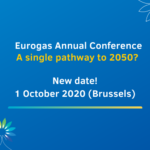
‘A Single Pathway to 2050?’ The Eurogas Annual Conference has been rescheduled from its original date in March. More information will be available in due course.
Flame Webinar | 12 – 13 October 2020
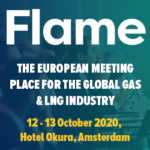
How well is the US LNG industry responding to 2020’s challenging market conditions? Join the Flame webinar for an in-depth webinar covering shut-ins and cancelled cargoes, the impacts of oil price volatility, the implications of falling spot prices for markets in the long-term, and possible consequences for US projects still in the pipeline.
The webinar will be moderated by Paul Sullivan of Worley, who will be joined by Texas LNG’s Vivek Chandra and ALNGE Pte Ltd’s Principal Consultant, Luc Speeleveld.
Register here. If you can’t make the indicated time, sign up anyway and Flame will send you a link to the recording after the webinar concludes.

